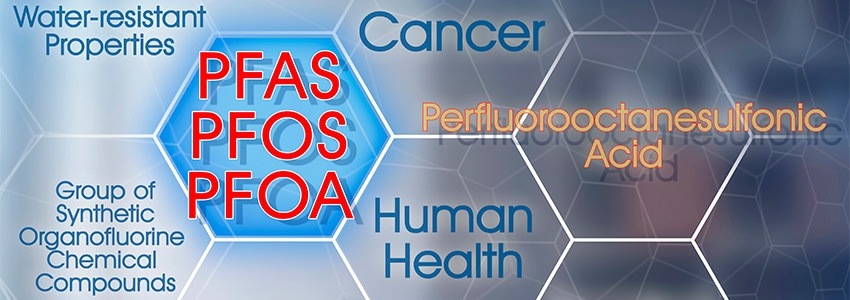Recent scientific findings have shed light on the implications of specific per- and polyfluoroalkyl substances (PFAS) for both human health and the environment. If you're a manufacturer or user of PFAS, it's imperative to stay informed about these developments and adopt best practices for managing these chemicals.
PFAS can be divided into various classes based on their chemical structure. The term "forever chemicals" generally refers to a wider group of PFAS known for their resistance to breaking down in the environment. Notably, PFOA and PFOS are especially well-known for their persistence, both in nature and within the human body, earning them the name "forever chemicals." These substances do not decompose easily and can accumulate over time, potentially leading to harmful health effects.
At Techspray, we don't use any “forever” PFAS chemicals in our product line, and we offer PFAS-free alternatives. We focus on low global warming potential chemistries which are easy to break down in the atmosphere. This article aims to inform you about PFAS and guide you on how to navigate responsible manufacturing and handling of these chemicals.
Background on PFAS
PFAS, or per- and polyfluoroalkyl substances, are a group of synthetic chemicals characterized by their strong carbon-fluorine bonds. These bonds make PFAS incredibly stable and resistant to breakdown, earning them the nickname "forever chemicals."
They consist of a chain of carbon atoms bonded to fluorine atoms, with various functional groups attached. This unique structure gives PFAS their useful properties, such as non-flammability, low surface tension, and chemical and thermal stability, but also makes them persistent in organisms and the environment.
Historical Context and Development:
- Developed in the 1940s by chemists at 3M and DuPont
- Initially praised for their non-stick and water-repellent properties
- Widely used in consumer and industrial products since the 1950s
- Concerns about environmental and health impacts emerged in the late 1990s
Recent research has revealed certain risks associated with PFAS exposure, prompting increased scrutiny of these chemicals.
Health Risks Associated with PFAS
- Short-Term Exposure:Studies have linked PFAS to elevated cholesterol, changes in liver enzymes, decreased vaccine response, and increased risks of kidney and testicular cancers.
- Long-Term Exposure:Potential impacts include developmental delays, reduced fertility, thyroid hormone disruption, and immune system weakening.
- Vulnerable Populations:Children, pregnant women, breastfeeding mothers, and those with compromised immune systems are particularly at risk.
Environmental Impact
- Persistence and Bioaccumulation:Generally, or for most PFAS, they are resistant to degradation and can persist for decades, accumulating in soil, water, and wildlife.
- Ecosystem Effects:These substances can affect wildlife reproduction, growth, and immune function, and disrupt aquatic ecosystems.
- Remediation Challenges:Traditional and advanced water treatment methods face difficulties in effectively addressing PFAS contamination, and large-scale cleanup efforts are costly and complex.
It's important to note that while these health and environmental risks have been associated with PFAS exposure, more research is needed to fully understand the long-term impacts and exposure thresholds. Ongoing studies will continue to refine our understanding of PFAS-related health risks.
Embracing Responsible PFAS Practices
Manufacturers that handle and produce items containing PFAS face increasing scrutiny due to environmental and health concerns. Embracing responsible practices is vital for promoting sustainability and maintaining public trust. Here are key strategies to consider for the safe handling and manufacturing of products with PFAS:
Minimizing PFAS Use:
- Evaluate PFAS alternatives and use wherever possible
- When PFAS are necessary, use only essential amounts
- Regularly review product designs to phase out PFAS where alternatives are viable
Implementing Safety Measures:
- Utilize closed-loop systems to prevent environmental release
- Install advanced filtration and treatment systems
- Provide comprehensive worker safety training and appropriate PPE
Proper Waste Management:
- Develop strict protocols for safe PFAS waste disposal
- Partner with certified hazardous waste facilities
- Explore emerging technologies for PFAS destruction, such as supercritical water oxidation
Environmental Stewardship:
- Conduct regular testing of soil, water, and air for PFAS contamination
- Implement swift remediation plans if contamination is detected
- Participate in industry efforts to improve PFAS management and remediation methods
Transparency and Engagement:
- Disclose PFAS use in products to customers
- Communicate openly with the public about PFAS practices
- Provide clear guidance on proper use, handling, and disposal of PFAS-containing products to end-users
Techspray’s Commitment
At Techspray, we recognize the importance of balancing effective manufacturing practices with environmental and health considerations. We are committed to offering PFAS-free options for industries that have historically relied on these chemicals. Our range of products is designed to support responsible operations while minimizing potential risks.
Moving Forward
Looking ahead, companies should prioritize research into safer alternatives, implement effective safety measures, and maintain transparent communication about the use of PFAS. By doing so, they can navigate the complex landscape of PFAS usage responsibly, balancing performance requirements with environmental care.
Embracing responsible PFAS handling practices is not just an environmental imperative, but also a strategic business decision. As regulations tighten and public awareness grows, manufacturers must adapt to stay competitive and keep trust.
Companies like Techspray are leading the way by offering PFAS-free product options, giving customers the flexibility to choose based on their specific needs and sustainability goals. This dual approach allows for a gradual transition away from PFAS while still meeting current market demands.
Explore how Techspray can support your needs while aligning with responsible manufacturing practices!




